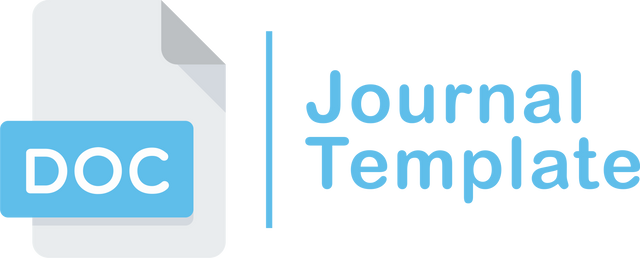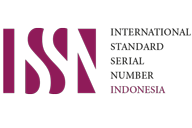Effective Strategies in Learning Nahwu and Sharaf: A Literature Review Perspective
DOI:
https://doi.org/10.62976/ierj.v2i3.750Keywords:
Arabic language, Learning strategies, Literature review, Teaching methods, ChallengesAbstract
ABSTRACT
Learning Nahwu and Sharaf, two fundamental branches of Arabic grammar, is crucial for understanding Islamic texts and mastering the Arabic language. However, the traditional approaches to teaching these subjects, such as memorization and lectures, are often considered insufficient in the modern educational context. This literature review explores effective strategies for learning Nahwu and Sharaf by comparing traditional and modern approaches. The study highlights the advantages of traditional methods in building a strong foundation of grammatical rules, while also acknowledging their limitations in developing practical language skills. Modern approaches, including the use of technology and communicative methods, are discussed as potential solutions to increase student engagement and promote the practical application of Nahwu and Sharaf. The review suggests that a blended learning approach, combining face-to-face instruction with online learning tools, can optimize learning outcomes by leveraging the strengths of both traditional and modern strategies. Furthermore, the study emphasizes the importance of adapting teaching methods to students' individual needs, such as their language proficiency, access to technology, and learning styles. The review concludes by recommending that educators adopt a flexible approach that integrates technology and communicative methods with traditional teaching practices. Additionally, policymakers are encouraged to support the integration of technology in Arabic language education, while researchers are advised to conduct empirical studies to assess the effectiveness of the proposed strategies in various contexts.
Keywords: Arabic language, Learning strategies, Literature review, Teaching methods, Challenges
ABSTRAK
Mempelajari Nahwu dan Sharaf, dua cabang mendasar dari tata bahasa Arab, sangat penting untuk memahami teks-teks Islam dan menguasai bahasa Arab. Namun, pendekatan tradisional untuk mengajarkan mata pelajaran ini, seperti menghafal dan ceramah, sering dianggap tidak cukup dalam konteks pendidikan modern. Kajian literatur ini mengeksplorasi strategi yang efektif untuk mempelajari Nahwu dan Sharaf dengan membandingkan pendekatan tradisional dan modern. Studi ini menyoroti keuntungan dari metode tradisional dalam membangun fondasi yang kuat dari aturan tata bahasa, sementara juga mengakui keterbatasan mereka dalam mengembangkan keterampilan bahasa praktis. Pendekatan modern, termasuk penggunaan teknologi dan metode komunikatif, dibahas sebagai solusi potensial untuk meningkatkan keterlibatan siswa dan mempromosikan aplikasi praktis Nahwu dan Sharaf. Kajian ini menunjukkan bahwa pendekatan pembelajaran campuran, yang menggabungkan pengajaran tatap muka dengan perangkat pembelajaran online, dapat mengoptimalkan hasil pembelajaran dengan memanfaatkan kekuatan strategi tradisional dan modern. Selain itu, penelitian ini menekankan pentingnya mengadaptasi metode pengajaran dengan kebutuhan individu siswa, seperti kemahiran bahasa, akses terhadap teknologi, dan gaya belajar. Kajian ini diakhiri dengan merekomendasikan agar para pendidik mengadopsi pendekatan yang fleksibel yang mengintegrasikan teknologi dan metode komunikatif dengan praktik pengajaran tradisional. Selain itu, para pembuat kebijakan didorong untuk mendukung integrasi teknologi dalam pendidikan bahasa Arab, sementara para peneliti disarankan untuk melakukan studi empiris untuk menilai keefektifan strategi yang diusulkan dalam berbagai konteks.
Kata kunci: Bahasa Arab, Strategi pembelajaran, Tinjauan literature, Metode pengajaran, Tantangan
References
Abdullah, A., & Al-Saad, M. (2019). Innovation in Nahwu and Sharaf Learning: Using Technology in Arabic Language Teaching. Journal of Arabic Education, 15(3), 122-135.
Al-Athari, S. (2020). Nahwu and Sharaf Learning Methods: Theoretical and Practical Studies. Al-Balagh Journal, 23(2), 45-60.
Al-Qudah, A., & Al-Sheikh, R. (2017). The Application of Traditional Methods in Arabic Language Learning in Indonesia. Journal of Arabic Language Education, 10(1), 50-65.
Harmer, J. (2015). The Practice of English Language Teaching. Pearson Education.
Miles, M. B., & Huberman, A. M. (2014). Qualitative Data Analysis: A Methods Sourcebook. SAGE Publications.
Piaget, J. (1972). The Psychology of Intelligence. Routledge.
Richards, J. C., & Rodgers, T. S. (2020). Approaches and Methods in Language Teaching. Cambridge University Press.
Skinner, B. F. (1957). Verbal Behavior. Appleton-Century-Crofts.
Sugiyono. (2019). Qualitative and Quantitative Research Methods. Alfabeta.
Vygotsky, L. S. (1978). Mind in Society: The Development of Higher Psychological Processes. Harvard University Press.
Downloads
Published
Issue
Section
License

This work is licensed under a Creative Commons Attribution-NonCommercial-ShareAlike 4.0 International License.


















